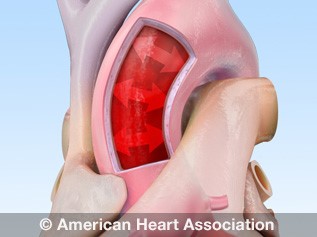How High Blood Pressure is Diagnosed
What’s the best way to diagnose HBP?
The best way to diagnose high blood pressure (HBP or hypertension) is to have your blood pressure measured.
How a blood pressure test works
- A blood pressure reading is taken with a pressure cuff (sphygmomanometer).
- During the test, the cuff is placed around the upper arm before being manually or electronically inflated.
- Once inflated, the cuff compresses the brachial artery, momentarily stopping blood flow.
- Next, air in the cuff is slowly released while the person performing the measurement listens with a stethoscope or monitors an electronic readout.
Watch an interactive animation of a manual blood pressure test, including the sounds that a medical professional hears as the blood moves through the brachial artery in your arm.
Your blood pressure reading is recorded as two numbers:
- Systolic blood pressure (the top number) — indicates how much pressure your blood is exerting against your artery walls during heartbeats.
- Diastolic blood pressure (the bottom number) — indicates how much pressure your blood is exerting against your artery walls while the heart is resting between beats.
Learn more about what your blood pressure numbers mean.
AHA recommendation
- If your blood pressure is normal (less than 120/80 mm Hg), your blood pressure should be screened during regular health care visits yearly for anyone 20 years of age or older.
If you are diagnosed with high blood pressure
- Your doctor may recommend monitoring your blood pressure numbers at home in addition to your regular health care visits.
- Your doctor will also likely recommend a treatment plan that includes lifestyle changes and, if needed, prescription medication.
Get the high blood pressure fact sheet. [English (PDF) | Spanish (PDF)]








